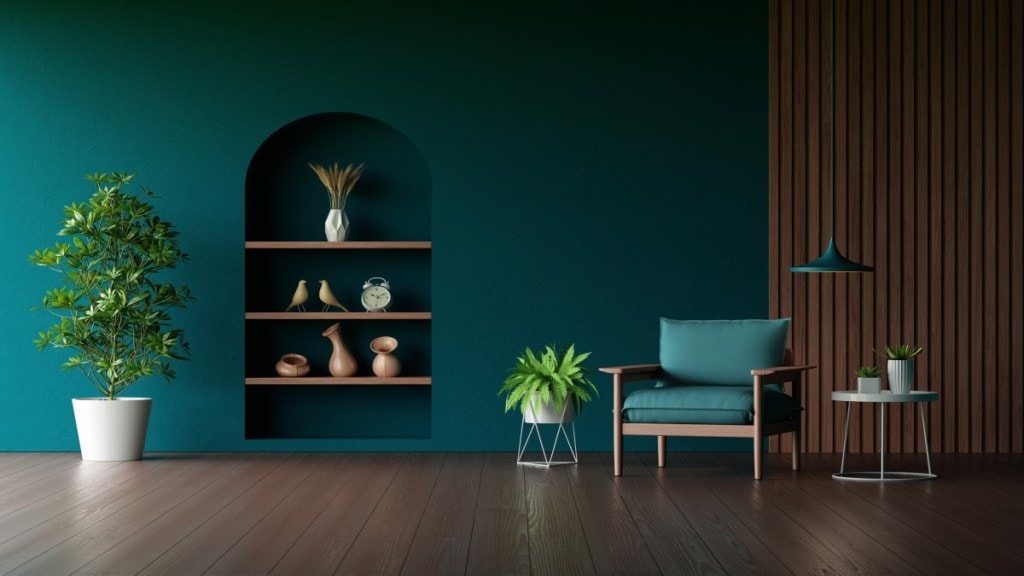By Mehar Deep Kaur and Agnishikha Choudhuri
There is a noticeable shift in the way Indians perceive the environment and prioritize the well-being of their living spaces. A significant section of our urban population is now open to investing more in homes that incorporate sustainable components, indicating a growing awareness of climate change and a tendency towards environmentally conscious choices.
The lockdown experience has prompted deeper introspection into our design choices for interior spaces. Our first-hand and prolonged encounters with the inherent issues of our indoor environments have led to a re-evaluation of how we approach and design these spaces. In addition to the growing social approval of employing locally sourced materials, refurbished furniture and biophilic elements, the economic feasibility of sustainable practices has added impetus to the movement. However, prolonging and growing this change requires more than a knee-jerk reaction to current circumstances.
We spend almost 90% of our lifetime in indoor environments, potentially exposing us to the off-gassing of chemicals present in diverse finishes and furniture, thereby escalating the risks of allergies, asthma, and Sick Building Syndrome. Being indoors also impacts crucial access to daylight and fresh air.
A large body of research proves that apart from the visual appeal of design, the interiors we create have a profound impact on the health and mindset of the occupants. The World Health Organization defines health as “a state of complete physical, mental, and social well-being”. So health encompasses not only medical factors but also the interplay between social and psychological elements. Clearly, long-term human health is contingent upon considering environmental sustainability as an integral component.
Education becomes pivotal, informing designers and consumers about responsible sourcing, ethical consumption and the commitment to recycling. The imperative to change in shaping a healthy interior design environment for future generations is rooted in the responsibility to foster spaces that prioritize well-being and sustainability.
Future designers must thus be taught about forefronting health considerations throughout the design process for creating spaces that optimize well-being. This holistic approach involves imparting knowledge about energy efficiency within building confines, employment of non-toxic materials with low emissions of volatile organic compounds (VOC) and other air pollutants, and ensuring effective natural ventilation strategies. As a result, an inseparable link is established between human health and environmental sustainability, guiding the evolution of design practices that optimize both well-being and ecological responsibility in interior environments.
In response, universities are reshaping their educational approaches to equip the next generation of designers with the skills necessary to navigate the dynamic demands of the 21st century. The practice and education of interior design integrates diverse disciplines, making it an excellent model for sustainability initiatives and biophilic design, emphasizing a holistic and ethical understanding.
A multidisciplinary approach not only integrates design principles with environmental science and ethical considerations but also underscores the necessity for modern interior designers to harness computer-aided technologies. Particularly, tools like Building Information Modeling (BIM) and Augmented Reality (AR) are becoming instrumental in achieving sustainable designs, especially in enterprise projects. Practical exposure remains paramount, with collaborations, hands-on experiences, and real-world projects immersing students in the complexities of sustainable design.
Case studies spotlighting successful sustainable projects serve as both inspiration and practical guidance. Statistics indicate a rise in eco-friendly design initiatives in India, with a significant surge in organizations and projects prioritizing renewable materials and energy-efficient solutions. The IGBC reports 11,053 projects covering over 10.27 billion square feet, of which 3,653 are certified and operational. These stories illustrate the tangible impact designers can have on the world, fostering a sense of responsibility in students.
The evolution of interior design education is a conscious effort to shape a future where design is synonymous with responsibility. As we rethink and adapt our educational approaches, we aim to nurture a generation of designers for whom sustainability is no more an option on a checklist, but an inextricable element of their craft. In this journey, education becomes the catalyst for transforming not just our interiors but our collective commitment to a healthier and more sustainable world.
The authors are associated with the School of Design and Innovation, RV University.
